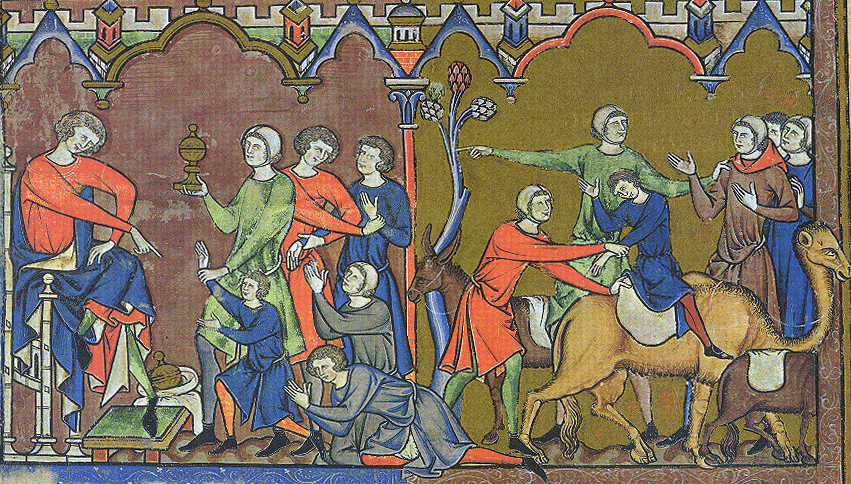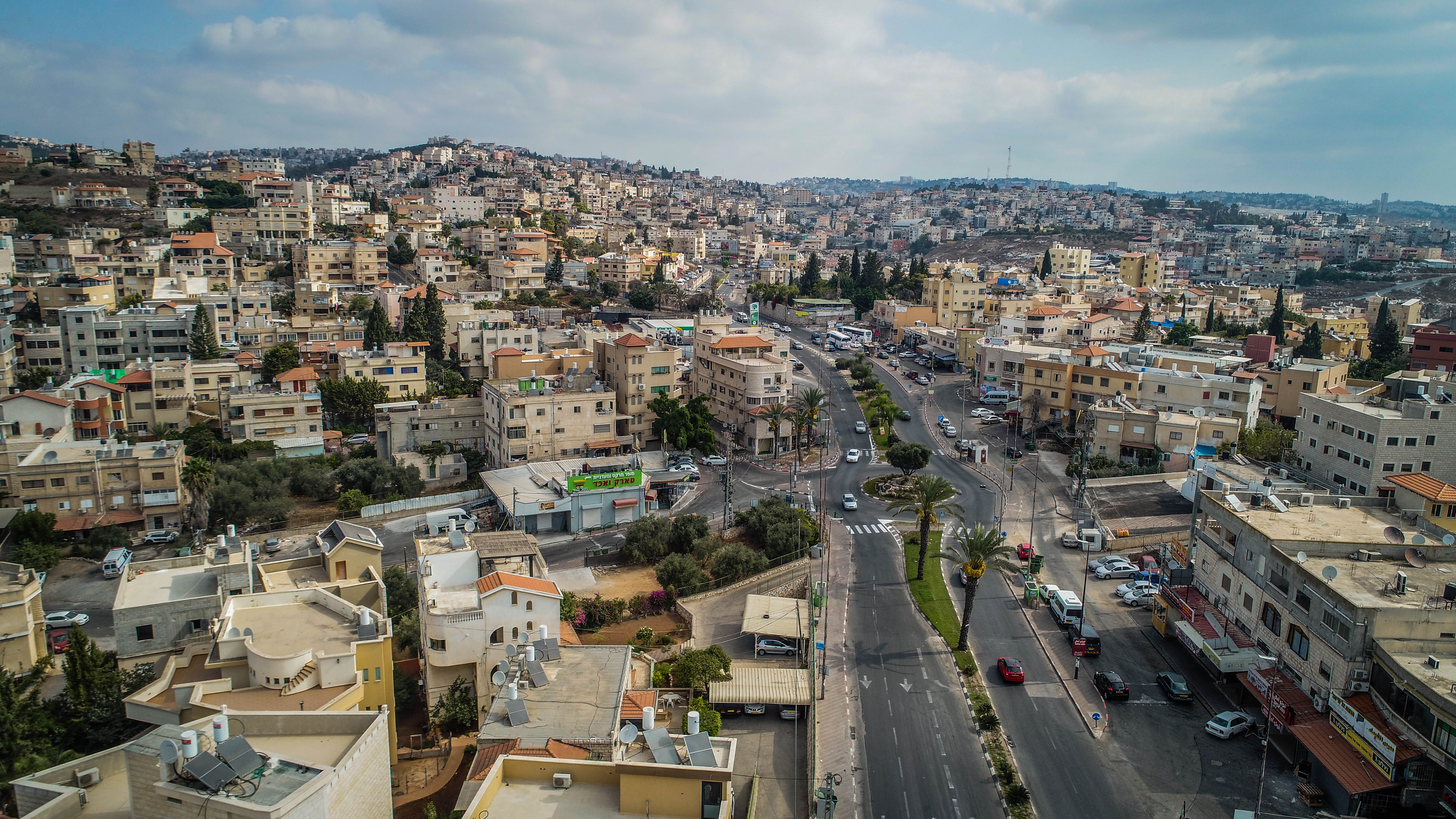|
Louis M. Rabinowitz
Louis M. Rabinowitz (1887–1957) was an American businessman, philanthropist and art collector. Born in Lithuania (then part of the Russian Empire), he emigrated to the United States, where he founded a manufacturing company and became a millionaire. He established endowments at Yale University and the Hebrew University of Jerusalem. He funded Nelson Glueck's archaeological trips to the Negev of Israel. His art collection is held posthumously at the Yale University Art Gallery. Background Louis M. Rabinowitz was born on October 16, 1887, in Rosanne (Raseiniai), now Lithuania. He emigrated to the United States in 1901, at the age of 14. Career Upon his arrival, Rabinowitz worked menial jobs and learned English by reading books in the Cooper Union library. He founded L.M. Rabinowitz & Co., a corset manufacturing company based in Brooklyn, New York City. He served as its chairman. He sold it to Holland Furnace Co., a Holland, Michigan-based home furnace company, for US$2 million i ... [...More Info...] [...Related Items...] OR: [Wikipedia] [Google] [Baidu] |
Raseiniai
Raseiniai (; Samogitian: ''Raseinē'') is a city in Lithuania. It is located on the south eastern foothills of the Samogitians highland, some north from the Kaunas–Klaipėda highway. History Grand Duchy of Lithuania Raseiniai is one of the oldest communities in Lithuania – the name of the settlement was mentioned for the first time in 1253. Its name was mentioned in Chronicles of the 13th and 14th centuries under various names, including ''Rushigen'', ''Rossyen'', and ''Rasseyne''. In 1253 Grand Duke Mindaugas ceded one part of the Samogitia territory, including some of the district around Raseiniai, to the Livonian Order, and the rest to the first bishop of Lithuania, Kristyan. In the 14th–18th centuries, Raseiniai was one of the most important towns in the Samogitia region. At the end of the 14th century the city became important centre, and its representative participated with others from the region in signing the peace treaty of Königsberg in 1390. At the end of ... [...More Info...] [...Related Items...] OR: [Wikipedia] [Google] [Baidu] |
Franz Rosenthal
Franz Rosenthal (August 31, 1914 – April 8, 2003) was the Louis M. Rabinowitz professor of Semitic languages at Yale from 1956 to 1967 and Sterling Professor Emeritus of Arabic, scholar of Arabic literature and Islam at Yale from 1967 to 1985. Background Rosenthal was born in Berlin, Germany into a Jewish family, on August 31, 1914, and was the second son of Kurt W. Rosenthal, a flour merchant, and Elsa Rosenthal (née Kirschstein). He entered the University of Berlin in 1932, where he studied classics and oriental languages and civilizations. His teachers were Carl Becker (1876–1933), Richard Walzer (1900–75), and Hans Heinrich Schaeder (1896–1957). He received his Ph.D. in 1935 with a dissertation, supervised by Schaeder, on Palmyrenian inscriptions (''Die Sprache der Palmyränischen Inschriften''). After teaching for a year in Florence, Italy, he became instructor at the Lehranstalt (formerly Hochschule) für die Wissenschaft des Judentums, a rabbinical seminar ... [...More Info...] [...Related Items...] OR: [Wikipedia] [Google] [Baidu] |
First Folio
''Mr. William Shakespeare's Comedies, Histories, & Tragedies'' is a collection of plays by William Shakespeare, commonly referred to by modern scholars as the First Folio, published in 1623, about seven years after Shakespeare's death. It is considered one of the most influential books ever published. Printed in folio format and containing 36 plays (see list of Shakespeare's plays), it was prepared by Shakespeare's colleagues John Heminges and Henry Condell. It was dedicated to the "incomparable pair of brethren" William Herbert, 3rd Earl of Pembroke and his brother Philip Herbert, Earl of Montgomery (later 4th Earl of Pembroke). Although 19 of Shakespeare's plays had been published in quarto before 1623, the First Folio is arguably the only reliable text for about 20 of the plays, and a valuable source text for many of those previously published. Eighteen of the plays in the First Folio, including '' The Tempest'', ''Twelfth Night'', and ''Measure for Measure'' among other ... [...More Info...] [...Related Items...] OR: [Wikipedia] [Google] [Baidu] |
Benjamin West 001
Benjamin ( he, ''Bīnyāmīn''; "Son of (the) right") blue letter bible: https://www.blueletterbible.org/lexicon/h3225/kjv/wlc/0-1/ H3225 - yāmîn - Strong's Hebrew Lexicon (kjv) was the last of the two sons of Jacob and Rachel (Jacob's thirteenth child and twelfth and youngest son) in Jewish, Christian and Islamic tradition. He was also the progenitor of the Israelite Tribe of Benjamin. Unlike Rachel's first son, Joseph, Benjamin was born in Canaan according to biblical narrative. In the Samaritan Pentateuch, Benjamin's name appears as "Binyamēm" (Samaritan Hebrew: , "son of days"). In the Quran, Benjamin is referred to as a righteous young child, who remained with Jacob when the older brothers plotted against Joseph. Later rabbinic traditions name him as one of four ancient Israelites who died without sin, the other three being Chileab, Jesse and Amram. Name The name is first mentioned in letters from King Sîn-kāšid of Uruk (1801–1771 BC), who called himself “King ... [...More Info...] [...Related Items...] OR: [Wikipedia] [Google] [Baidu] |
American Schools Of Oriental Research
The American Society of Overseas Research (ASOR), founded in 1900 as the American School of Oriental Study and Research in Palestine, is a non-profit 501(c)(3) organization based in Alexandria, Virginia which supports the research and teaching of the history and cultures of the Near East and Middle Eastern countries. ASOR supports scholarship, research, exploration, and archeological fieldwork and offers avenues of disseminating this research through their publications. ASOR also provides support for undergraduates and graduates in institutions of higher education around the world pursuing studies of the history and cultures of the Near and Middle East. As of January 2020, Sharon Herbert, is the president of ASOR. Her predecessor, Susan Ackerman served as President from 2014-2019. ASOR collaborates with the following independent overseas institutes: * Albright Institute of Archaeological Research, Jerusalem – former directors of which include Millar Burrows who was instrumen ... [...More Info...] [...Related Items...] OR: [Wikipedia] [Google] [Baidu] |
Dura-Europos Synagogue
The Dura-Europos synagogue (or "Dura Europas", "Dura Europos" etc.) was an ancient synagogue uncovered at Dura-Europos, Syria, in 1932. The synagogue contains a forecourt and house of assembly with painted walls depicting people and animals, and a Torah shrine in the western wall facing Jerusalem. It was built backing on to the city wall, which was important in its survival. The last phase of construction was dated by an Aramaic inscription to 244 CE, making it one of the oldest synagogues in the world. It was unique among the many ancient synagogues that have emerged from archaeological excavations as the structure was preserved virtually intact, and it had extensive figurative wall-paintings, which came as a considerable surprise to scholars. These paintings are now displayed in the National Museum of Damascus. Dura-Europos was a small garrison and trading city on the river Euphrates, and usually on the frontier between the Eastern Roman Empire and the Parthian and finally ... [...More Info...] [...Related Items...] OR: [Wikipedia] [Google] [Baidu] |
Syria
Syria ( ar, سُورِيَا or سُورِيَة, translit=Sūriyā), officially the Syrian Arab Republic ( ar, الجمهورية العربية السورية, al-Jumhūrīyah al-ʻArabīyah as-Sūrīyah), is a Western Asian country located in the Eastern Mediterranean and the Levant. It is a unitary republic that consists of 14 governorates (subdivisions), and is bordered by the Mediterranean Sea to the west, Turkey to the north, Iraq to the east and southeast, Jordan to the south, and Israel and Lebanon to the southwest. Cyprus lies to the west across the Mediterranean Sea. A country of fertile plains, high mountains, and deserts, Syria is home to diverse ethnic and religious groups, including the majority Syrian Arabs, Kurds, Turkmens, Assyrians, Armenians, Circassians, Albanians, and Greeks. Religious groups include Muslims, Christians, Alawites, Druze, and Yazidis. The capital and largest city of Syria is Damascus. Arabs are the largest ethnic group, ... [...More Info...] [...Related Items...] OR: [Wikipedia] [Google] [Baidu] |
Sha'alvim
Sha'alvim ( he, שַׁעַלְבִים) is a religious kibbutz in central Israel and one of only two affiliated with Poalei Agudat Yisrael (Hafetz Haim being the other). Located near the city of Modi'in-Maccabim-Re'ut, it falls under the jurisdiction of Gezer Regional Council. In it had a population of . History During the 18th and 19th centuries, the area of Sha'alvim belonged to the Nahiyeh (sub-district) of Lod that encompassed the area of the present-day city of Modi'in-Maccabim-Re'ut in the south to the present-day city of El’ad in the north, and from the foothills in the east, through the Lod Valley to the outskirts of Jaffa in the west. This area was home to thousands of inhabitants in about 20 villages, who had at their disposal tens of thousands of hectares of prime agricultural land. The kibbutz was founded on 13 August 1951 by a Nahal group from the Ezra movement, on lands of the depopulated Palestinian village of Salbit. It was named after a biblical location m ... [...More Info...] [...Related Items...] OR: [Wikipedia] [Google] [Baidu] |
Yafa An-Naseriyye
Yafa an-Naseriyye ( ar, يافة الناصرة, " Jaffa of Nazareth", also Yafa, Kfar Yafia or Yafi ar, يافا, يفيع, he, יָפִיעַ) is an Arab town in the Lower Galilee, Israel. It forms part of the metropolitan area of Nazareth, also an Arab locality. Declared a local council in 1960, it had a population of in , approximately 70% of whom were Muslim and 30% Christian. History Yafa an-Naseriyye is an ancient town where rock-cut tombs and cisterns have been found. Pottery finds date to the Iron Age IIA-B (late tenth and ninth centuries BCE), Hellenistic (late second and early first centuries BCE.), and Roman era (first to fourth century). Ancient period Yafa was a vassal of Megiddo in the fourteenth century BCE, according to the Amarna letters.Alexandre, 2012Yafi‘a Final report/ref> It has been identified with the ancient town of ''Japhia'', mentioned in the Book of Joshua as a border town belonging to Zebulun. Classical antiquity First-century Jewish h ... [...More Info...] [...Related Items...] OR: [Wikipedia] [Google] [Baidu] |
Caesarea Maritima
Caesarea Maritima (; Greek: ''Parálios Kaisáreia''), formerly Strato's Tower, also known as Caesarea Palestinae, was an ancient city in the Sharon plain on the coast of the Mediterranean, now in ruins and included in an Israeli national park. For centuries it was a major intellectual hub of the Mediterranean and cultural capital of Palestine. The city and harbour were built under Herod the Great during c. 22–10 or 9 BCE near the site of a former Phoenician naval station known as ''Stratonos pyrgos'' (Στράτωνος πύργος, "Straton's Tower"), probably named after the 4th century BCE king of Sidon, Strato I. It later became the provincial capital of Roman Judea, Roman Syria Palaestina and Byzantine Palaestina Prima provinces. The city was populated throughout the 1st to 6th centuries AD and became an important early centre of Christianity during the Byzantine period. Its importance may have waned starting during the Muslim conquest of 640 in the early Middle ... [...More Info...] [...Related Items...] OR: [Wikipedia] [Google] [Baidu] |
Near East
The ''Near East''; he, המזרח הקרוב; arc, ܕܢܚܐ ܩܪܒ; fa, خاور نزدیک, Xāvar-e nazdik; tr, Yakın Doğu is a geographical term which roughly encompasses a transcontinental region in Western Asia, that was once the historical Fertile Crescent, and later the Levant region. It also comprises Turkey (both Anatolia and East Thrace) and Egypt (mostly located in North Africa, with the Sinai Peninsula being in Asia). Despite having varying definitions within different academic circles, the term was originally applied to the maximum extent of the Ottoman Empire. According to the National Geographic Society, the terms ''Near East'' and ''Middle East'' denote the same territories and are "generally accepted as comprising the countries of the Arabian Peninsula, Cyprus, Egypt, Iraq, Iran, Israel, Jordan, Lebanon, Palestinian territories, Syria, and Turkey". In 1997, the Food and Agriculture Organization of the United Nations, Food and Agriculture Organization (FAO) ... [...More Info...] [...Related Items...] OR: [Wikipedia] [Google] [Baidu] |





